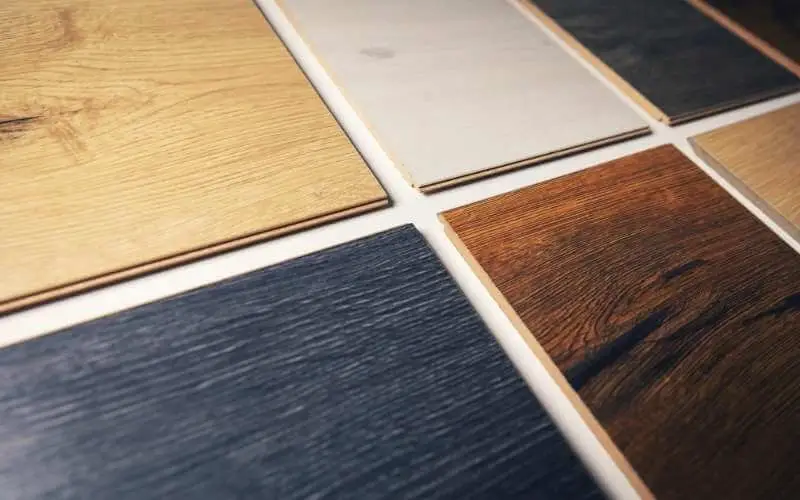Choosing a flooring color is an exciting but exhausting process. There are just so many available options that it is easy to feel overwhelmed.
This article provides you with some tips on how to choose flooring color so you can pick the perfect color of flooring for your space.
First, you would need to define your style sense, do you want a brightly colored home or you would want a monochrome outlook?
You also need to consider the colors already present in the room, so you can choose a flooring color that blends in perfectly with the rest of the room. The function of the room also plays a role in this decision making process.
A lot goes into choosing a flooring color and you need to be confident of your choice before taking the plunge, so you do not make a costly mistake.
How to Choose Flooring Color
Table of Contents
1. Define your Interior Design Style
Defining your interior design style will enable you to determine the style, appeal, and aesthetic to opt for your space. It is very crucial that you set your interior design style before any selection because each design style has different color palettes, materials, and textures.
With a particular design in mind, you can begin finding the colors and textures that suit the style as well as your budget. If you are going for a rustic or industrial style, you need a floor made with raw materials and textures.
If you would prefer a minimalist look then a cleaner and light color will be perfect. Defining the style of your home will get you the needed inspiration to enable you to make the right choice.
Read: How to paint concrete to look like stone
2. Access the Color Palette of the Room
It is also important to access the existing color pallet of the room or keep one in mind before choosing your flooring color. Determine the general color and textures of existing furniture, paint, lamps, rocks, and accessories, or any item you intend to add to the room.
This enables you to narrow your flooring color options down to a manageable number, so you can create a blend of colors that fits your space and pairs perfectly.
You do not want to necessarily match your floors’ color to that of your furniture to avoid “drowning” out your space but at the same time, you do not want the colors brightly contrasting against each other.
You need to choose a flooring color that complements your furniture as well as the entire room’s decor rather than competing with it.
Read: How to paint wood floor porch
3. Determine the Function of the Room
The intended purpose of the room also weighs on your choice of flooring color. You would want your living space to reflect more light than you would like in the bedroom.
You can make a room appear larger than it actually is by painting the walls white, especially when it has a high ceiling and large windows. Installing light-colored flooring also achieves a similar result and naturally makes a room appear larger.
So if you have a small space you would like to make look larger, choose light-colored flooring finishes. This gives your home an overall finished look and blends out the color scheme of your home perfectly while also making the space look bigger.
Having a level of uniformity of colors in your home makes it seem like a single continuous area that flows with light and space.
There are certainly other factors that determine the right flooring color for your space like having pets or kids, budget, and if you are living in a rented or self-owned home.
Aside from the color of flooring also, inspect the materials the flooring is made of as certain flooring materials are suitable for high-traffic areas, while others cannot withstand wear and tear.
Determining the function of the space helps you to choose an appropriate flooring, spaces like kitchens or laundry would need flooring that is water-resistant like vinyl or tiles, while you can install aesthetically appealing flooring like hardwood flooring in spaces like the living area or bedroom.
Also consider the temperature of the space, humidity, application process, resistance to wear and tear, and required maintenance and care before choosing a flooring color.
Related: Type of paint to use on ceramic floor tiles
What Color Floor is Best for Small Rooms
Light and airy colors are best used to color floor in small rooms, regardless of the type of flooring; carpet, tile, wood, or vinyl.
Lighter colors can help make the room look larger and more open than it actually is. Living rooms and bedrooms can be given a touch of elegance by painting the floors off-white tones like ivory, cream, and light tan.
However, if you have carpet flooring, when choosing a light color carpet, ensure it is stain-resistant and can be cleaned easily.
Should Floors Be Darker Or Lighter than Walls?
Many home experts recommend painting your floor a color darker than the walls. When lighter walls are paired with a dark floor, it makes the room seem larger. Keep in mind that the effectiveness of this color illusion is greatly impacted if you have low windows.
Related: Pros and Cons of painting tile floors
Conclusion
This article discusses how to choose flooring color, this may seem like a simple task but is quite exhausting when you try to reach a decision on the right flooring color.
This is due to the various available options, you can narrow down these options by firstly defining the style you want for the room.
Are you aiming for a rustic or minimalist look? What is the function of the space? What colors are already present in the room? These are some questions you need to get answers to enable you to choose a suitable flooring color for your space.

